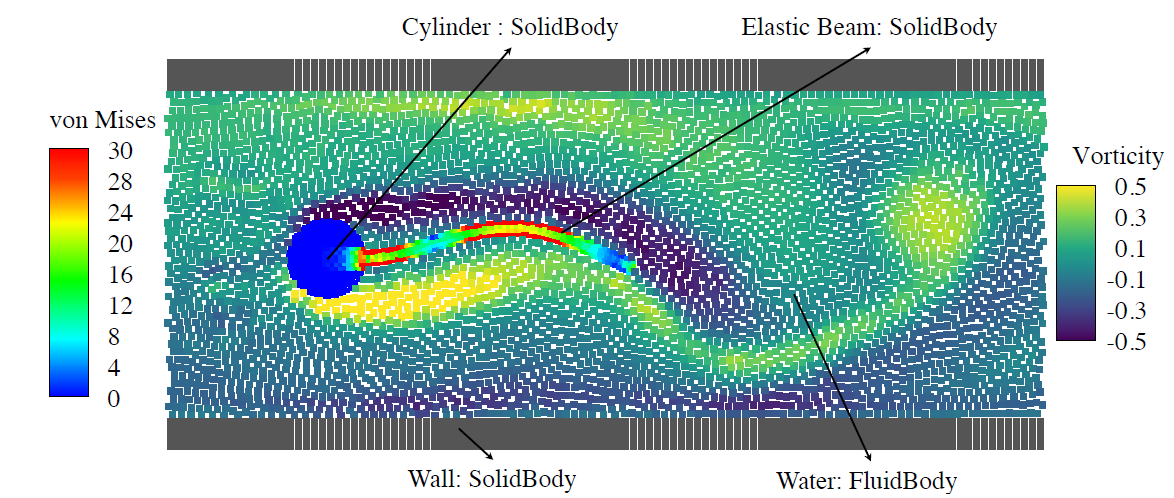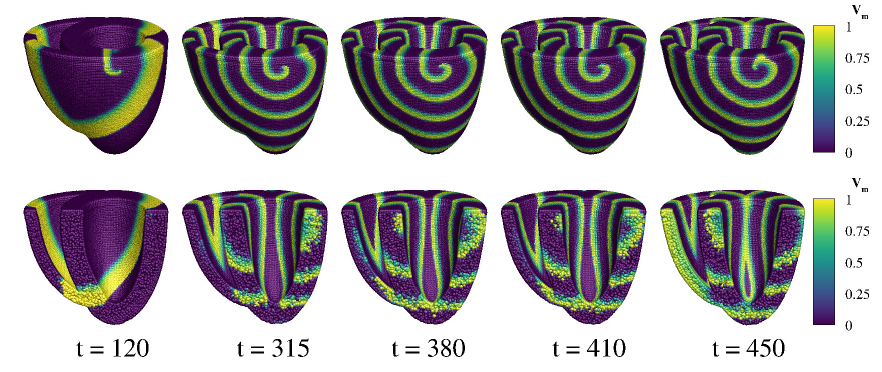SPHinXsys: an open-source SPH code ofr multi-physics simulations (original) (raw)

Unified Multi-physics modeling
Thanks for the generalized formulation techniques, all physical models are formulated with SPH method. Therefore, monolithic coupling is achieved for all physics in continuum medium.
- Fluid dynamics, including multiphase flow
- Solid dynamics, including linear- and thin-structure models with contact and self-contact
- Fluid-structure interactions (FSI)
- Coupling to multi-body dynamics (with Simbody library https://simtk.org)
- Thermodynamics, diffusion and reaction
- Tissue, muscle, electrophysiology and biological neural network modeling

Multi-scale material models
Extensive material models have been implemented in SPHinXsys. A special feature is that independent material properties can be detailed to individual particle level.
- Fluids, including weakly compressible (Newtonian and Oldroy-B) and fully compressible fluids
- Solids, including Linear elastic solid, non-linear elastic solid with Neo-Hookean model and anisotropic muscle model
- Reactions, including generalized diffusion-reaction model, which is able handle arbitrary number of diffusive or reactive species.

Structure-of-array (SoA)
SPHinXsys uses structure-of-array (SoA), and introduces particle-sorting. Such techniques lead to dramatic increase of computational efficiency due to the cache-friendly design.
- A new generalized particle data class by which one can easily add any method-based variables without modify particle class to increase data reuse and efficiency.
- Our recent numerical simulation of wave interaction with an oscillating wave surge converter (OWSC) involving complex FSI and multi-body dynamics \cite{zhang2020efficient}, demonstrate that, with the new data structure, SPHinXsys is able to not only accurately predict the complex dynamics, but also show optimized computational performance through CPU cost analysis and comparison with commercial software package and other SPH-based solvers in literature.